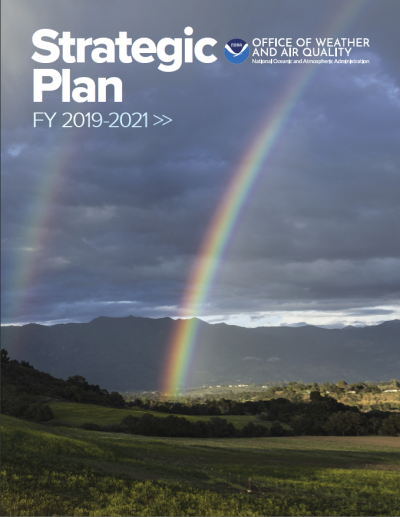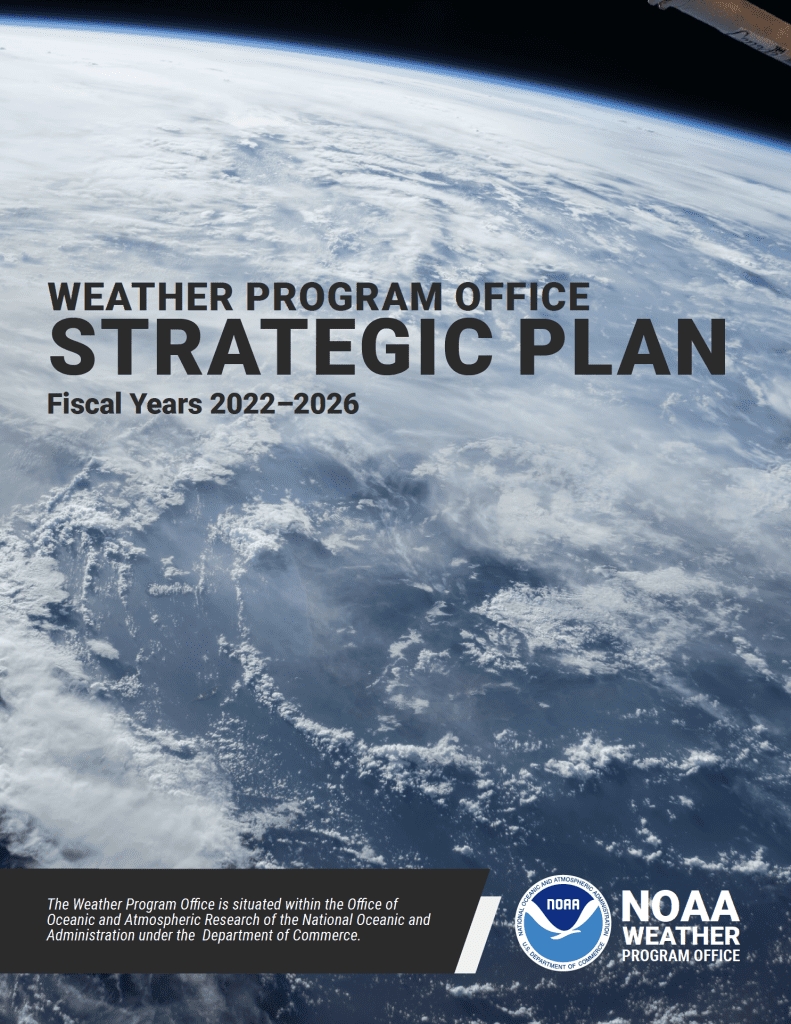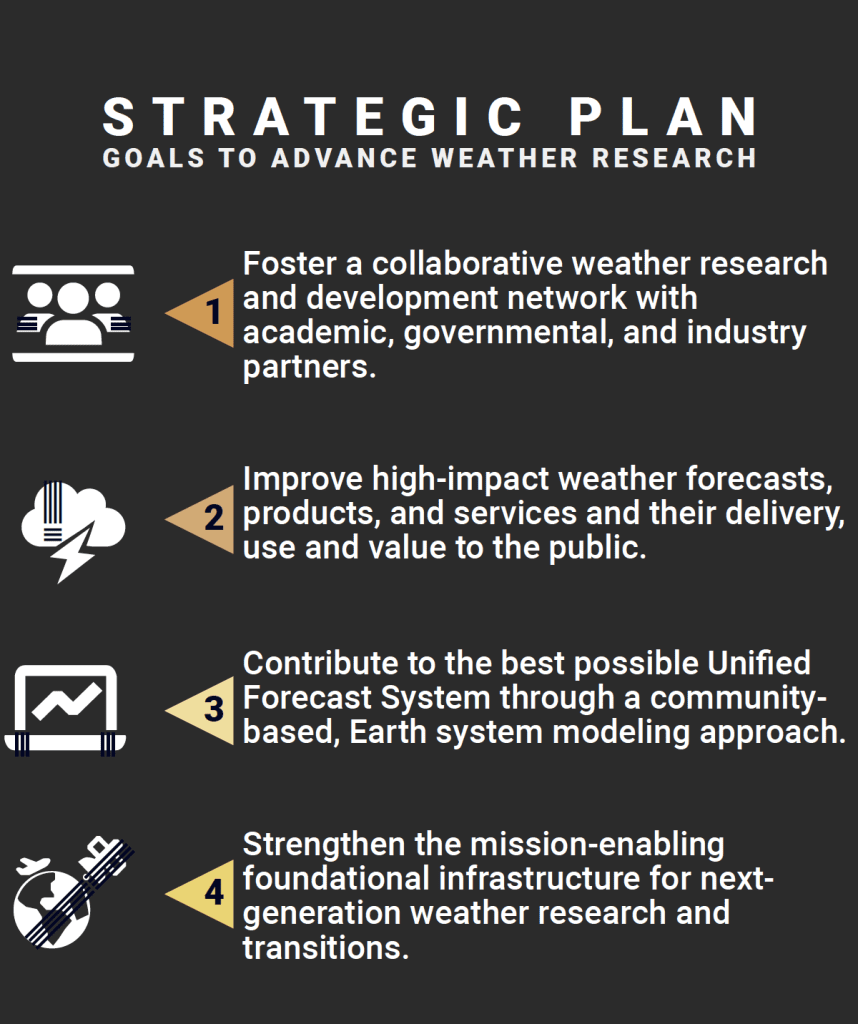The Weather Program Office’s (WPO) strategic goals for 2022–2026 reflect our commitment to lead, fund, and collaborate on strategic weather research to advance scientific knowledge and its applications. WPO will foster collaborations within the National Oceanic and Atmospheric Administration (NOAA) and throughout the Weather Enterprise to improve our understanding of the Earth system and transition research to actionable information that saves lives, protects property, and enhances the Nation’s economy.
Strategic Plan Introduction
WPO’s four strategic goals for 2022–2026 are a collection of interdependent research strategies that advance weather information, forecasts, products, and services for NOAA and the Nation. Goals one and four detail the foundational aspects needed to accomplish WPO’s mission and vision, including workforce development, funding strategies, and research infrastructure. Goals two and three describe specific forecast and service improvements envisioned across the weather value chain.
Foundational to the achievement of our bold strategic goals and objectives are the multitude of research partners with whom we collaborate. This includes OAR Laboratories and Program Offices, other federal agencies, academia, non-governmental organizations, and industry. Specific areas where WPO intends to build or strengthen these essential partnerships are woven throughout this plan. In particular, we recommit to our strong relationship with the National Weather Service (NWS) to continue to advance operations to research (O2R) and research to operations (R2O) transitions.
WPO leadership interviewed over 50 internal and external stakeholders and evaluated numerous background sources in the development of this plan. The Weather Research Forecasting Innovation Act 2017 and its reauthorization in 2019 continue to serve as foundational legislation for our office and guide our overall strategy. We have also incorporated 25 of the 33 recommendations from the congressionally-requested Priorities for Weather Research (PWR) Report published in December 2021 by the NOAA Science Advisory Board (SAB) into this plan, and we continue to align with the Oceanic and Atmospheric Research’s (OAR) Strategic Implementation Plan, which contains a straightforward but complex goal to “Make Forecasts Better.”
Thank you for your interest in learning more about our 2022–2026 vision and strategy in NOAA’s Weather Program Office. A snapshot of our four strategic goals are below.
Goal 1.
Foster a collaborative weather research and development network with academic, governmental, and industry partners.
Goal 2.
Improve high-impact weather forecasts, products, and services and their delivery, use, and value to the public.
Goal 3.
Contribute to the best possible Unified Forecast System through a community-based, Earth system modeling approach.
Goal 4.
Strengthen the mission-enabling, foundational infrastructure for next-generation weather research and transitions.
FOUNDATIONS
Stakeholders and employees are the foundation of the new WPO Strategic Plan. The initial draft was developed based on an analysis of stakeholder plans and reports, over 50 internal and external stakeholder interviews and survey responses, and multiple employee workshops and brainstorming sessions. The draft was then refined by WPO Leadership, employee feedback, and final OAR review. The core values, which are central to WPO and this strategic plan, were developed using a grassroots approach with participation from all WPO staff.


Previous Strategic Plan FY19-21
Saving lives, reducing property damage, and enhancing the national economy.
In the FY2019-2021 Strategic Plan, we executed our mission of finding, funding, and fostering collaborative weather and air quality research to discover, develop, and transition products, tools, and services for timely and accurate weather and air quality forecasts. Read about how we worked towards those goals from Fiscal Years 2019-2021.

